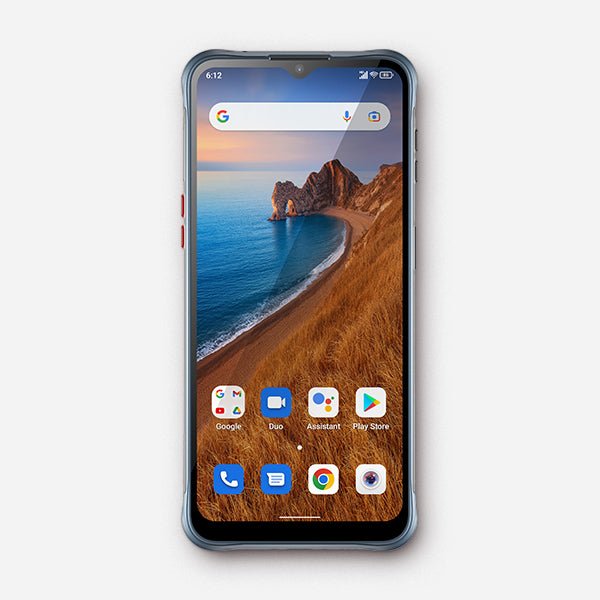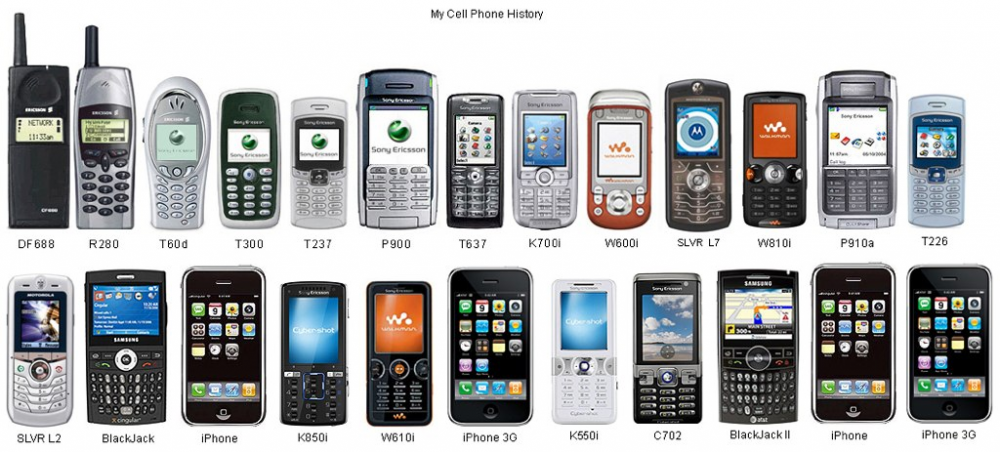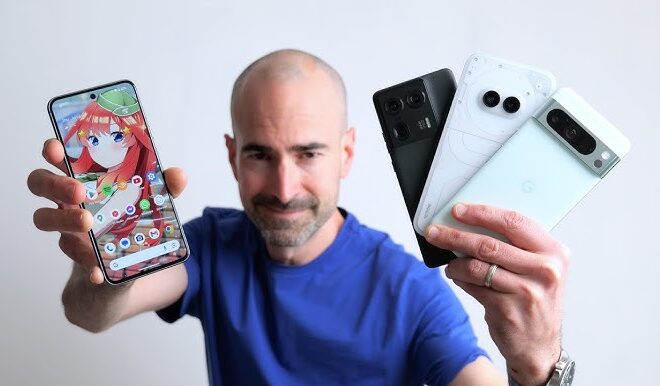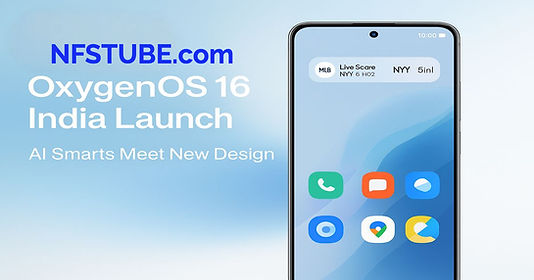
Ahead of the Curve: How Android Phones Pioneered Today’s ‘New’ Mobile Features
Introduction
In the fast-paced world of mobile technology, the line between groundbreaking innovation and iterative refinement is often blurred. Major software updates are unveiled with great fanfare, promising revolutionary new ways to interact with our devices. Yet, for seasoned observers of the industry, these announcements often trigger a sense of déjà vu. Features presented as brand new on one platform have, in many cases, been a staple on another for years. This cycle of innovation, adoption, and refinement is a fundamental dynamic of the tech landscape, and nowhere is it more apparent than in the ongoing competition between Android and iOS.
While a polished launch can capture the public’s imagination, it’s crucial to look deeper at the origins of these ideas. The Android ecosystem, with its open-source nature and diverse range of hardware manufacturers, has long served as a sprawling laboratory for mobile innovation. From deep customization to advanced AI-powered utilities, many of the features that are now becoming standard across the industry first took root in the fertile ground of Android. This article explores the key features and philosophies that have allowed Android phones to consistently stay ahead of the curve, examining how its open approach fosters experimentation and ultimately benefits all smartphone users.
The Android Philosophy: An Open Ecosystem as an Innovation Engine
The core difference between Android and its primary competitor lies not just in code, but in philosophy. Android was designed from the ground up to be open and flexible, a stark contrast to Apple’s walled-garden approach. This fundamental decision has had profound implications, transforming the ecosystem into a dynamic breeding ground for new ideas, driven by both Google and a host of competing hardware partners. This environment doesn’t just allow for innovation; it demands it.
Customization as a Core Tenet
From its earliest days, Android championed user choice and personalization. The ability to change nearly every aspect of the user interface has been a hallmark of the platform. This started with simple widgets—live, interactive elements on the home screen that could display weather, news, or calendar events. While now a standard feature everywhere, widgets were an Android exclusive for nearly a decade. This concept was taken further with “launchers,” third-party applications that can completely replace the default home screen. Apps like Nova Launcher and Action Launcher allowed users to change icon packs, adjust grid layouts, and create complex gesture controls long before such flexibility was even contemplated on other platforms. This deep level of customization, treating the UI as a modular component rather than a locked-down element, empowered users and developers to reimagine the smartphone experience entirely. The latest Android news often covers new customization features, like the “Material You” theming engine introduced in Android 12, which automatically creates a color palette for the entire UI based on your wallpaper—a level of aesthetic integration that is both powerful and deeply personal.
The Power of Choice and OEM Competition

Unlike a single-manufacturer ecosystem, Android thrives on competition. Companies like Samsung, Google, OnePlus, and Xiaomi are in a constant battle to differentiate their devices. This hardware rivalry is a powerful catalyst for software innovation. Samsung, for instance, pioneered the large-screen “phablet” with its Galaxy Note series and developed DeX, a feature that turns a smartphone into a desktop-like computer when connected to a monitor. OnePlus built its brand on speed, pushing the boundaries of fast charging technology (Warp Charge) and high-refresh-rate displays. Meanwhile, Google’s Pixel line has become a showcase for the power of computational photography and on-device AI. These manufacturer-led innovations, often introduced within custom Android “skins” like One UI or OxygenOS, serve as real-world tests for new concepts. Successful features are often adopted into the core Android Open Source Project (AOSP), eventually becoming standard for all Android phones.
From Niche to Mainstream: A Technical Breakdown of Android’s Trailblazing Features
Examining specific features reveals just how far ahead the Android platform has often been. These aren’t minor tweaks; they represent fundamental shifts in how we use our mobile devices. What often begins as a power-user feature on a specific set of Android gadgets eventually gets refined and simplified for mass-market adoption across the industry.
Advanced AI and Computational Photography
Long before “AI” became the industry’s biggest buzzword, Google was integrating machine learning directly into its Pixel phones. The launch of the first Pixel in 2016 marked a shift from raw hardware specs to software-driven camera excellence. Features like Night Sight, introduced in 2018, used sophisticated algorithms to stack multiple exposures, producing shockingly clear and bright photos in near-total darkness—a feat that seemed like magic at the time. This was followed by a suite of AI-powered tools that have become synonymous with the Pixel experience. Call Screen uses Google Assistant to answer suspected spam calls on your behalf, providing a real-time transcript. Magic Eraser, powered by the custom Tensor chipset, allows users to remove unwanted objects or people from photos with a simple tap. These features demonstrate a proactive, utility-focused approach to AI, solving everyday problems rather than just offering creative novelties. This deep integration of hardware and software on select Android phones set the stage for the on-device AI race we see today.
Open Communication Standards: The RCS Saga
For years, the division between iMessage’s “blue bubbles” and SMS’s “green bubbles” has been a point of contention, creating a fractured messaging experience. While Apple maintained its proprietary system, Google championed an open standard to modernize texting for everyone: Rich Communication Services (RCS). As the successor to SMS, RCS enables modern chat features like typing indicators, read receipts, high-resolution photo and video sharing, and group chat enhancements over a data connection. Google worked for years with global carriers and manufacturers to make RCS the default standard on all Android phones through its Messages app. This long, arduous campaign was a fight for interoperability—the principle that users should have a seamless communication experience regardless of the device they choose. Apple’s recent decision to finally adopt the RCS standard is a direct result of this sustained pressure, validating Android’s long-standing commitment to open platforms and a better, more connected experience for all.
The Perception Gap: Why Polished Integration Often Outshines Pioneering Innovation
If Android has consistently been first to market with so many features, why do they often gain widespread recognition only after appearing on other platforms? The answer lies in the fundamental differences in ecosystem structure, marketing strategy, and the user perception of polish versus raw functionality. This “perception gap” is a crucial part of the mobile tech story.
The Fragmentation Challenge and Opportunity
Android’s greatest strength—its diversity—can also be its greatest communication challenge. A groundbreaking feature might launch exclusively on a new Samsung Galaxy or Google Pixel, but it could take months or even years for it to become available on other Android phones, if at all. This fragmentation means that there is no single “Android experience.” While this fosters choice, it makes it difficult for Google to market a new feature to the entire user base simultaneously. An innovation on one line of Android gadgets might go unnoticed by millions of other Android users. This stands in stark contrast to Apple, which can announce a feature and roll it out to hundreds of millions of compatible devices on a single day, creating a massive, unified media moment and the perception of a universal upgrade.
Marketing the Experience, Not Just the Feature
Another key difference lies in marketing philosophy. Android manufacturers often market new technologies based on their technical specifications—faster processors, more RAM, or higher megapixel counts. Apple, on the other hand, excels at marketing the *experience* and the *benefit*. They don’t just announce a feature; they build a compelling narrative around how it will seamlessly integrate into a user’s life. When Apple does adopt a feature that has existed on Android, it is often after years of refinement. They polish the user interface, ensure deep integration with the rest of the operating system, and present it as the definitive version. This focus on user experience and ecosystem cohesion, backed by a world-class marketing machine, often allows them to claim the definitive implementation of an idea, even if they didn’t originate it.
Practical Implications for Consumers: Navigating the Android vs. iOS Landscape
Understanding this dynamic of innovation and adoption is more than just an academic exercise; it has real-world implications when choosing your next smartphone. Your personal priorities—be it access to the latest technology, ease of use, or ecosystem continuity—should guide your decision. The constant stream of Android news and updates offers a different value proposition than the more measured pace of iOS.
For the Tech Enthusiast and Early Adopter

If you thrive on being at the cutting edge, love to customize your experience, and want access to new technologies as soon as they are available, the Android ecosystem is your natural home. High-end Android phones from manufacturers like Google, Samsung, and others are where you will find the industry’s latest advancements first. Whether it’s foldable displays, periscope zoom lenses, or novel AI software features, Android is the platform for experimentation. The trade-off may be a slightly less consistent experience across different apps and services, but for those who value features and flexibility above all else, it’s a small price to pay.
For the User Prioritizing Simplicity and Ecosystem
If your priority is a device that is simple, secure, and works seamlessly with your other gadgets, the appeal of a more curated ecosystem is undeniable. While you may have to wait longer for certain features to arrive, they are typically implemented with a high degree of polish and deep integration. This user-friendly approach, combined with strong privacy controls and a unified hardware/software experience, is a compelling reason for many to choose a more locked-down platform. The key is to recognize that you are trading early access to innovation for a more predictable and streamlined user experience.
Conclusion
The narrative of mobile innovation is not a simple story of one company copying another. It is a complex interplay of ideas, where the open, competitive, and sometimes chaotic world of Android serves as an essential incubator for the entire industry. Features born out of OEM competition and Google’s software prowess often set the agenda for what a modern smartphone should be capable of. While the polish and powerful marketing of competitors can often capture the spotlight, the origin of these ideas frequently traces back to an Android phone.
Ultimately, this competitive dynamic is a massive win for consumers. The pressure from the diverse world of Android gadgets pushes the entire market forward, forcing all players to innovate, refine, and improve. Whether you’re an Android loyalist enjoying the latest bleeding-edge feature or an iOS user receiving a newly polished version of a long-awaited tool, you are benefiting from a richer, more capable, and more personal computing device in your pocket. The cycle continues, and the latest Android news today is very likely a preview of the mainstream smartphone features of tomorrow.



